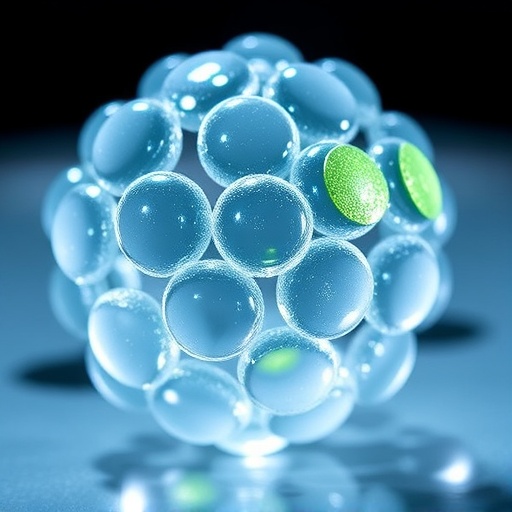There's plenty that's striking about Phoroncidia rubroargentea, a species of spider native to Madagascar, starting with their size – at just three millimeters, they're barely larger than a few grains of salt.
But the reason they caught Sarah Kariko's eye had more to do with their color.
Unlike many other species, which gradually see their color leach away when preserved in ethanol, the tiny spiders dazzled with brilliant, shimmering red and silver, even after decades in ethanol.
"I was sorting through specimens from my expeditions to Madagascar and these little red spiders kept catching my eye," Kariko said. "I asked a colleague, 'Have you ever seen this before?' When I started going through the same spider species on the shelves in the collection and then began examining specimens from other museums they looked like this too, so I started asking how is this happening? What is going on here?"
Those questions were the start of a journey that would lead Kariko and several other Harvard scientists (plus two scientists from the Weizmann Institute of Science) to investigate both how the tiny spiders produce their distinctive colors and why they are so surprisingly durable.
Their findings, published in 2018 as a cover article in the Journal of the Royal Society Interface, show that the spiders actually use a combination of strategies – including structural colors and pigment and fluorescent material – to produce their colors, and that all of it is protected by a tough cuticle layer.
"We don't yet know exactly why these spiders have this coloration," Kariko said. "There are many visual predators, like chameleons, in the forests where these spiders are found, so it's possible this may be a warning or protective coloring. With this paper, we've made some inroads into how they make these colors, but the why is still a mystery we hope to eventually unravel."
The first step in dismantling the spider's colors involved James Weaver from Harvard's Wyss Institute for Biologically Inspired Engineering who examined the specimens with Kariko, and then contacted Mathias Kolle while he was with Joanna Aizenberg's Biomineralization and Biomimetics Lab (he is now a professor in MIT's Department of Mechanical Engineering) to perform spectroscopy measurements.
They quickly realized they also needed someone with a special skillset in material science as well as excellent manual dexterity to work with these tiny specimens, so they contacted Ling Li.
Li, a postdoctoral fellow at the Wyss Institute (and now a professor in Virginia Tech's Department of Mechanical Engineering), used a broad array of imaging techniques – from optical microscopy to fluorescence to electron microscopy – to examine the colors in precise detail.
The team expanded to include Jaakko Timonen from the John A. Paulson School of Engineering and Applied Sciences (and now a professor at Aalto University in Finland), who conducted detailed fluorescence imaging of the spider specimens, as well as Carolyn Marks, biological imaging scientist at the Center for Nanoscale Systems, who was also brought on board to help prepare and examine very thin slices of the spider.
Very quickly, said Li and Kolle, it became clear that the silver color was the result of a material similar to that found in reflective fish scales.
That structure functions, Kolle said, by stacking a series of tiny, 100-nanometer thick plates – about 1/1000th the width of a human hair – made of highly reflective material on top of each other. Each plate reflects light at a slightly different wavelength and those wavelengths either cancel each other out or add up to produce color.
"Ling's analysis brought this out beautifully," Kolle said. "We were able to image these platelets and show that they have a specific thickness, but there is no specific control of the spacing between them. That means some areas might filter out red and reflect it strongly, and other areas might do the same for blue, or for green. When you add all that up, you get the silver color."
"We were able to show that this silver color is structural," Li added. "So that explains why the color doesn't fade away – it's built into the structure."
The team also found that the (non-structural) red color is able to resist fading in ethanol because the pigment is trapped in an array of tiny "microspheres" that are only about one micron in diameter.
"To the best of our knowledge this is something unique, I think, in terms of spiders," Li said. "We don't yet know the exact chemical components of the pigment, but it appears these microspheres contribute to the stability of the red color."
The spider's color protections, however, don't end there.
"It is likely the colors' stability is also enhanced by an outer cuticle layer," Li said. "This is a hard-bodied spider, so that cuticle surface is relatively thick and hard, and robust, which could provide additional mechanical and chemical stability. Around the silver color, the cuticle is very uniform and transparent, but in the red area, it is modified to include additional pigment which adds to the red color." And while this color is surprisingly stable over time, their experiments also show that its long term resistivity to chemical attack by the surrounding fixatives is also sensitive to mechanical disruption or other impacts, which can damage the complex multi-component pigment based system.
The team's analysis of how the spiders produce their distinctive color also uncovered evidence of an unusual phenomenon, called "twinning" in the structure of the plates used to produce the silver color. Two scientists from the Weizmann Institute, Leslie Leiserowitz and Dvir Gur, brought their expertise in crystallography to help the team identify the characteristics of atomic arrangement of these guanine crystals by using the structural data acquired by Li and Kariko.
"These plates are made of guanine crystals – the same material found in reflective fish scales – but in this case, the plates are not a single crystal, there is a twinning plane that runs parallel to the orientation of the crystal. Essentially, there are two crystals facing each other so the atoms are arranged in mirror symmetry."
Though such structures have been observed in two other animals – copepod bodies and scallop eyes – P. rubroargentea is the first known example of twining in arachnids, Kariko said.
Though the team is still working to understand exactly why twinning occurs, Li suggested it may be necessary to ensure the platelets grow to the proper thickness to achieve their desired optical properties.
Ultimately, Kolle said, the hope is that a better understanding of how the spiders produce their vivid and long-lasting color might also yield valuable insights that could be applied to other questions in materials science.
"The take home message here is if you are building a new material for a given purpose and you have certain criteria you want to satisfy, like color robustness," Kolle said. "We can take some of these natural solutions as a starting point."
Phoroncidia rubroargentea is also the spider that inspired Kariko to create the Spider Super Hero Program, designed initially for pediatric oncology and hematology patients at the Floating Hospital for Children, and later expanded for Harvard's Museum of Natural History – it has now reached more than 200 children and their families.
In this program, participants take part in an imaginary expedition around the world to meet many different spider species and learn about their adaptations (or "super powers"), that contribute to their survival in their specific habitats.
After this initial introduction to spider biodiversity, the children would then design their very own spider super hero to help them with a real world challenge that they are facing and could use a little extra help with. In the case of P. rubroargentea, for example, this spider could remind us that even if you are going through chemotherapy or something else–she can help us remember how beautiful we can stay inside and out regardless of the difficulties we encounter along the way.
"There are many ways to be inspired by the natural world," Kariko said. "The hope is this program can help open our eyes to the beauty and possibility from even the littlest creatures among us."
###
Media Contact
Peter Reuell
[email protected]
617-496-8070
@HarvardResearch
http://www.harvard.edu




